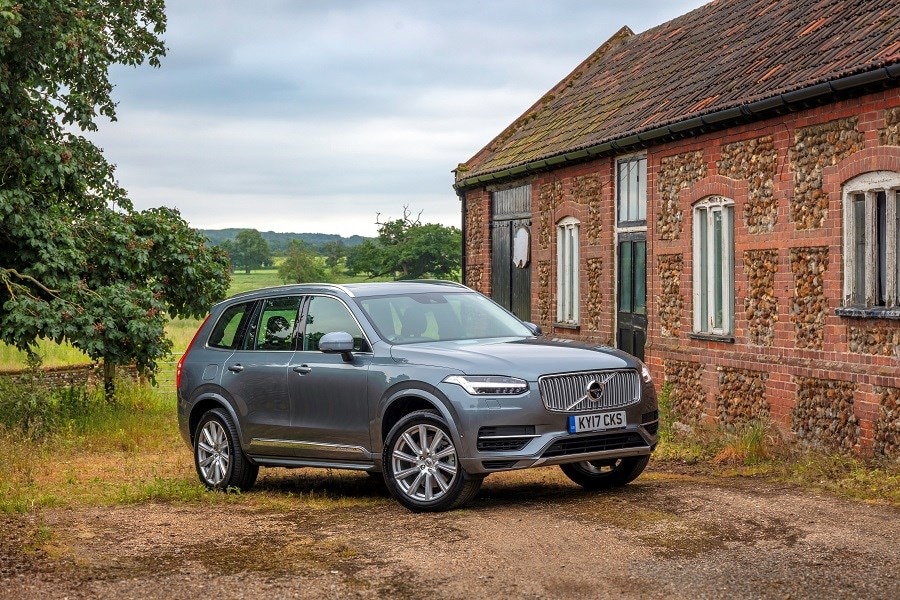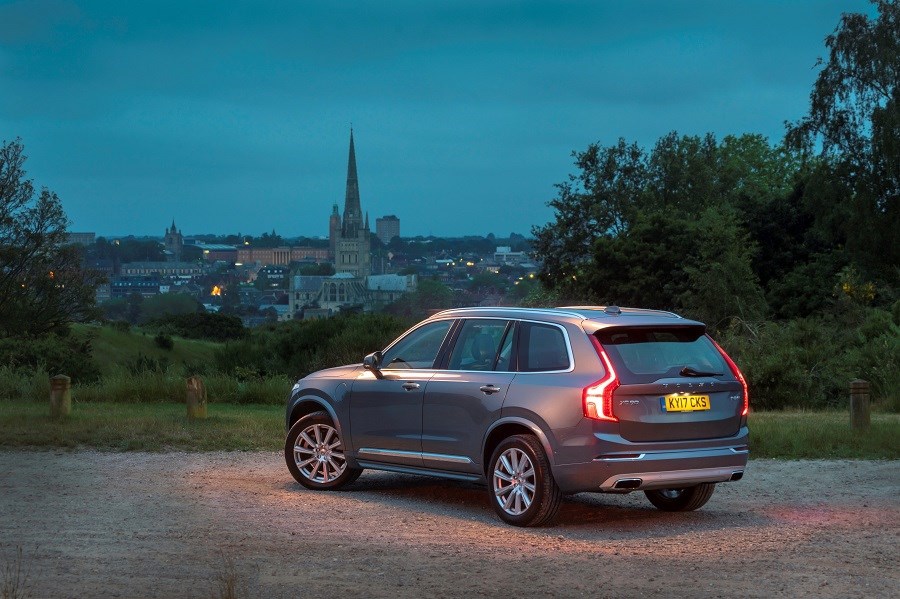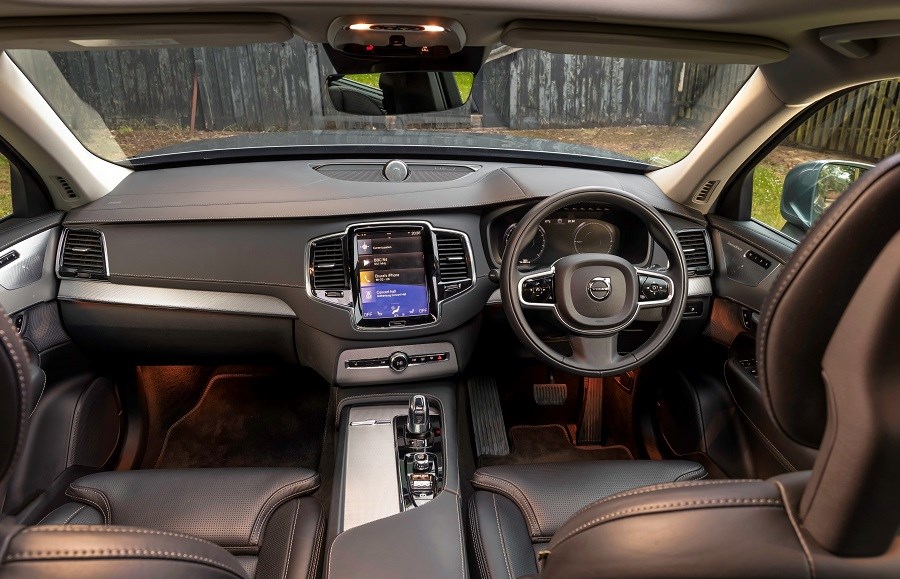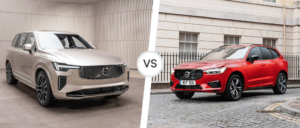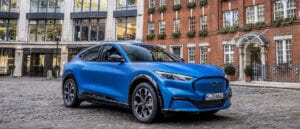Latest model
Volvo chose to rip up the rule-book with its second XC90 – choosing a bold look to both the interior and exterior, which would set a precedent for all Volvos that have followed since.
Debuting in August 2014, the XC90 showed off Volvo’s now trademark ‘Thor’s Hammer’ daytime running lights, as well as a new front fascia.
At launch, it had the most advanced safety equipment of any car on-sale, with technology to protect occupants should the car run off the road, as well as a system that can automatically brake if the driver pulls out in front of another motorist.
It combined the XC90’s signature practicality with excellent levels of refinement. On the inside, the new design featured a tablet-like nine-inch touchscreen, as well as a virtually button-free layout to make it look de-cluttered.
Since launch in 2015, Volvo has added an R-Design trim level to the line-up, alongside a powerful T6 petrol engine.
Value for money
All this kit and luxury has come at a price, though, and the Volvo no longer undercuts rivals from Land Rover and Audi. However, with all this safety equipment and luxury, it can no longer be considered a sub-premium model.
Standard equipment includes adaptive cruise control, electrically-operated and heated seats, an impressive nine-inch touchscreen and automatic LED headlights, to name but a few of the features fitted to it. That said, top-spec models cost over £60,000, which is a lot of money, even if the XC90 is a very accomplished car.
For those on a budget, the first XC90 represents an excellent choice. With tidy high-mileage examples for sale for under £3,000, there’s the opportunity to get a lot of car for your money. Thankfully, those wanting a slightly fresher example of the first-generation car will not need to extend that budget too far.
Second-generation versions are unsurprisingly far more expensive, but the XC90 has still depreciated quite heavily. This means that around £25,000 will be enough for a 2015 model in Momentum spec, although it will likely have close to 100,000 miles on the clock.
Increasing the budget to £30,000 will buy a well-specced model with a more conservative 40,000 miles displayed.
There are also some fantastic discounts to be had on nearly-new XC90s. We spotted an example under a year old, with just 10,000 miles on the clock for £38,000, which is a sizeable £14,000 off the original list price.
Looks and image
The first XC90 was a car that got on with the job in hand, but lacked any style while doing so. Fast-forward to the latest model and that has certainly changed. The fantastic ‘Thor’s Hammer’ lights, imposing grille and beautifully crafted rear end all help provide the XC90 with some tremendous road presence. While it is a huge car, the styling manages to mask it well – far better than the Mercedes GLS and Land Rover Discovery, for example.
It’s a similar story on the inside when it comes to style. Volvo ripped up the rulebook with the XC90’s cabin, removing all but a few buttons in the centre console and on the steering wheel to leave a clutter-free layout that runs throughout the cabin. The cabin also receives a new nine-inch portrait touchscreen, which looks classy though it can be fiddly to use at first. This dash layout has been rolled out on all new Volvos since, with the XC90 setting a firm precedent about where the Swedish firm wants to head with its future design. The interior quality is also excellent, with the XC90 feeling upmarket and luxurious throughout.
For those wanting superb comfort and refinement, there are few cars more capable than the XC90 over long distances.
The ride is superb, and it’s only cars fitted with the largest 22-inch alloy wheels that can feel a bit firm; that aside, you’ll be hard-pressed to fault the XC90 for comfort.
The entire engine range is excellent, although the diesel unit suits the character of the car better than the T6 petrol engine does. The only thing to note is that it doesn’t feel as dynamic as the barometers in its class; the XC90 rolls more in the corners and does not have the same steering feel as either the BMW X5 or Porsche Cayenne.
But on the road, the XC90 never feels its size, and is surprisingly easy to manoeuvre, which is helped by the fantastic array of cameras and sensors fitted.
 app
app